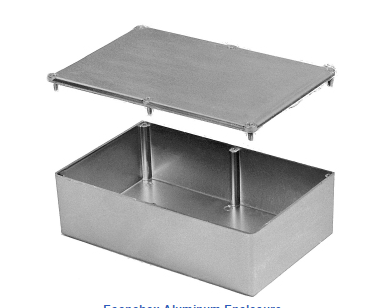OK, I guess I was trying to oversimplify it.
I am modifying a purchased die cast aluminum enclosure to add wall mount connectors (among other things). Here's the enclosure:
The enclosure consists of a die cast lid and die cast box. All four sides of the box have like a 1.5° draft angle that, of course, makes it longer and wider at the top than at the bottom The box has a shelf on which the lid rests when it's installed and this shelf is recessed slightly down from the top rim. This shelf is parallel with the bottom surfaces.
There are connectors, panel mount switches, and panel mount indicator lights installed on all four sides of the box. I am only modifying the box portion. The lid is out of the picture.
Each side of the box will of course be the primary datum for the features in that particular side. The trick lies in establishing secondary and tertiary datums. If the box had no draft angle then I would use one center plane datum established using the length dimension and one center plane using the width dimension, use those datums as tertiary datums and take dimensions from those center planes. Also, if the box had no draft angle, I would use the bottom surface as my secondary datum for all four sides. But that's not the case.
Using datum targets if necessary, how would I establish secondary and tertiary datums? Also, if somebody could refer me to a good reference with detailed examples of how to dimension and tolerance cast and molded parts I'd be much obliged! Draft angles complicate things.
I hope my picture inserted properly into the body of the text as intended. If not, I attached the picture file
capture.png.
Tunalover

